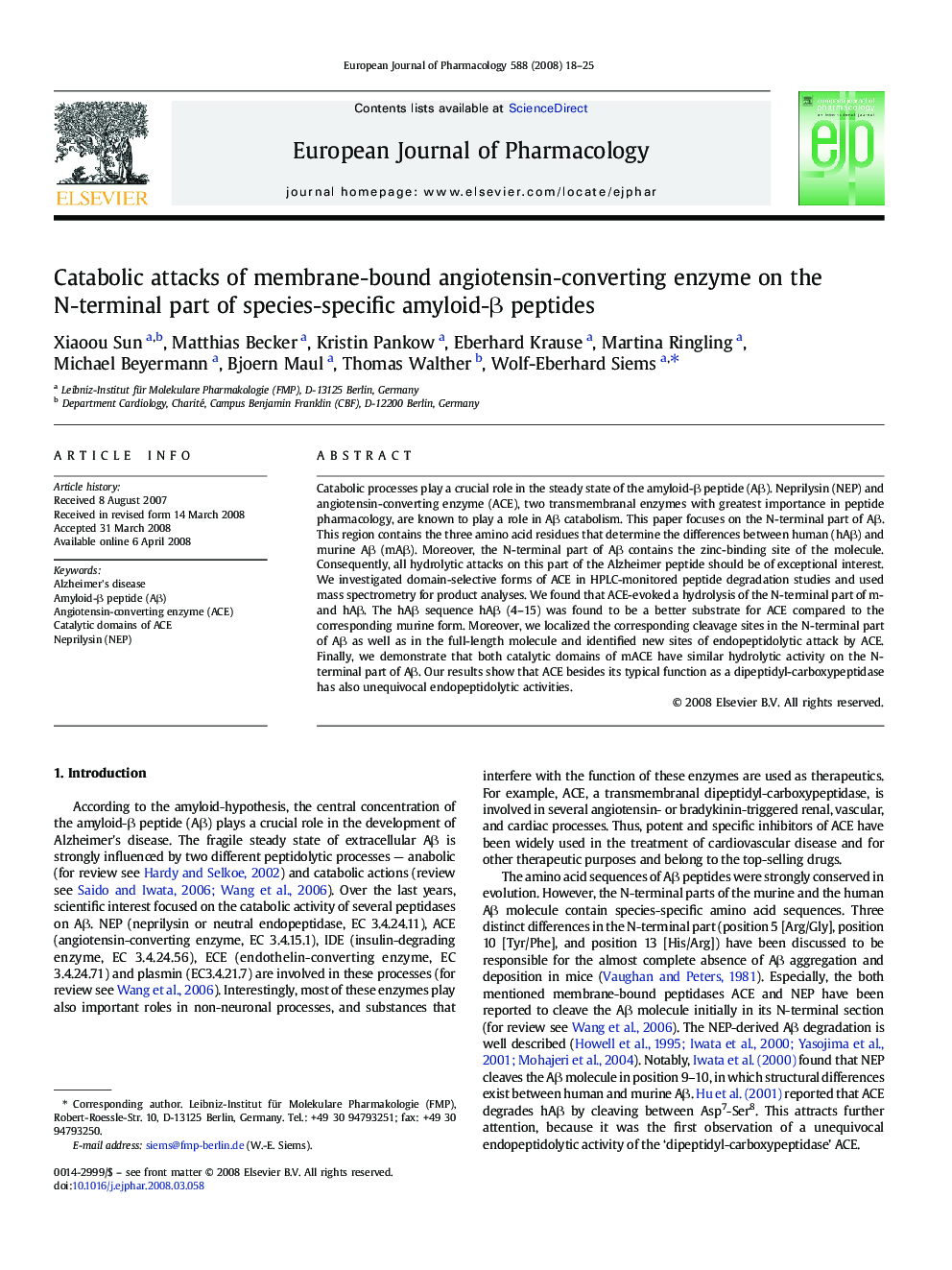| کد مقاله | کد نشریه | سال انتشار | مقاله انگلیسی | نسخه تمام متن |
|---|---|---|---|---|
| 2535061 | 1559109 | 2008 | 8 صفحه PDF | دانلود رایگان |

Catabolic processes play a crucial role in the steady state of the amyloid-β peptide (Aβ). Neprilysin (NEP) and angiotensin-converting enzyme (ACE), two transmembranal enzymes with greatest importance in peptide pharmacology, are known to play a role in Aβ catabolism. This paper focuses on the N-terminal part of Aβ. This region contains the three amino acid residues that determine the differences between human (hAβ) and murine Aβ (mAβ). Moreover, the N-terminal part of Aβ contains the zinc-binding site of the molecule. Consequently, all hydrolytic attacks on this part of the Alzheimer peptide should be of exceptional interest.We investigated domain-selective forms of ACE in HPLC-monitored peptide degradation studies and used mass spectrometry for product analyses. We found that ACE-evoked a hydrolysis of the N-terminal part of m- and hAβ. The hAβ sequence hAβ (4–15) was found to be a better substrate for ACE compared to the corresponding murine form. Moreover, we localized the corresponding cleavage sites in the N-terminal part of Aβ as well as in the full-length molecule and identified new sites of endopeptidolytic attack by ACE. Finally, we demonstrate that both catalytic domains of mACE have similar hydrolytic activity on the N-terminal part of Aβ. Our results show that ACE besides its typical function as a dipeptidyl-carboxypeptidase has also unequivocal endopeptidolytic activities.
Journal: European Journal of Pharmacology - Volume 588, Issue 1, 24 June 2008, Pages 18–25